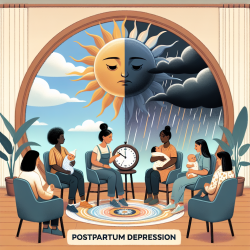Understanding the Impact of Emotional Pedagogy
As educators, we often find ourselves in the midst of societal changes that inevitably seep into our classrooms. The research article "When Pedagogy Is Painful: Teaching in Tumultuous Times" by Marisela Martinez-Cola et al. provides a profound exploration of how educators can navigate these challenging environments. This piece is particularly relevant for those in speech-language pathology and online therapy services, like those offered by TinyEYE, where understanding emotional contexts is crucial for effective teaching and therapy.
Integrating Emotions into Pedagogy
The study underscores the importance of acknowledging emotions in educational settings. It suggests that both students and teachers bring their personal experiences and emotional states into the classroom, which can significantly impact learning outcomes. This is particularly true in courses dealing with sensitive topics such as race and ethnicity, where the personal and political intersect.
For practitioners in speech-language pathology, this insight is invaluable. Recognizing the emotional states of children can enhance therapy outcomes. By creating an environment where emotions are acknowledged and addressed, therapists can foster a more supportive and effective learning atmosphere.
Strategies for Educators
Martinez-Cola et al. propose several strategies for educators to improve their teaching practices during tumultuous times:
- Embrace Emotional Learning: Encourage open discussions about emotions and how they relate to the subject matter. This approach can help students process their feelings and engage more deeply with the content.
- Reflect on Personal Biases: Educators should continuously reflect on their own biases and how these might affect their teaching. This self-awareness can lead to more inclusive and equitable educational practices.
- Incorporate Diverse Perspectives: Ensure that course materials reflect a wide range of perspectives, particularly those of marginalized groups. This inclusivity can help students feel seen and valued in the classroom.
- Create Brave Spaces: Move beyond the concept of "safe spaces" to "brave spaces," where students are encouraged to engage in difficult conversations with respect and empathy.
Encouraging Further Research
While the article provides a comprehensive overview of strategies for handling emotional pedagogy, it also highlights areas where further research is needed. Practitioners are encouraged to explore how these strategies can be adapted and applied in various educational contexts, including online therapy sessions.
For those interested in delving deeper into the findings of this research, I highly recommend reading the original paper. It offers valuable insights that can enhance your practice and improve outcomes for your students or clients.
To read the original research paper, please follow this link: When Pedagogy Is Painful: Teaching in Tumultuous Times.










